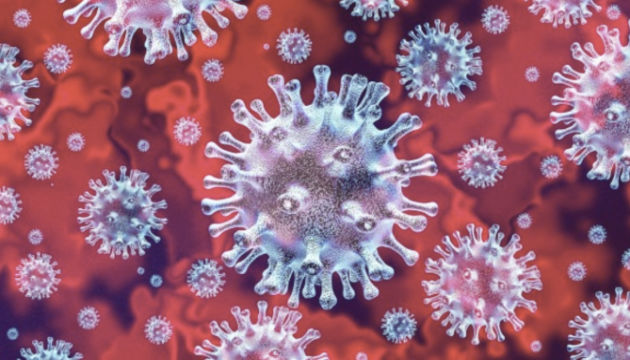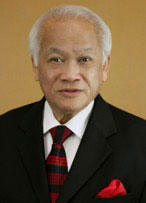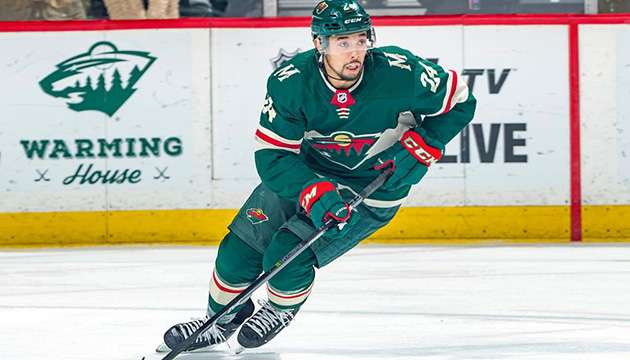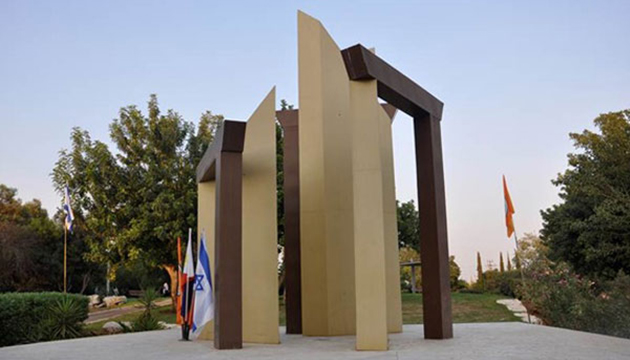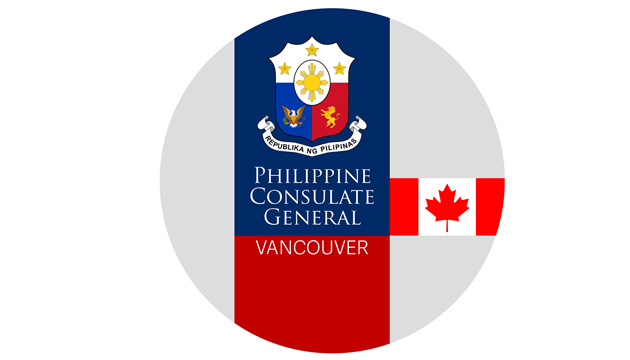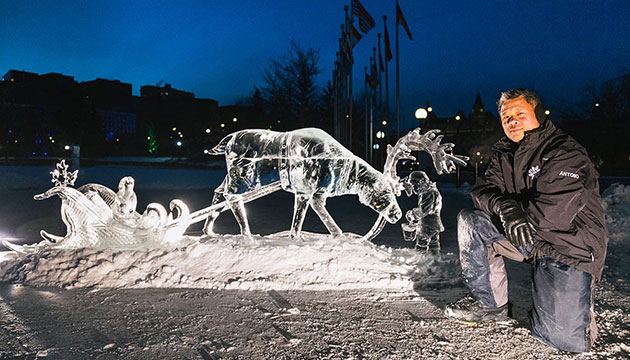December 1, 2023: On May 5th of this year – nearly three-and-a-half years after WHO issued the highest international public health alert in January 2020 – COVID-19 ended as a global public health emergency, thanks to mass vaccination (over 100 million vaccine doses safely administered in Canada and over 12 billion globally).Until then, the dreaded waves of illness and death appeared never-ending.
The harsh realities of the pandemic are now confined to history. But the invisible COVID virus remains a threat to global health and most likely will continue circulating during our lifetime – evolving, mutating, and causing illness with its acute and chronic consequences. Hence, a need for vigilance, including updating everyone’s vaccination status with new updated vaccines.
- Virtues of Vaccination with Updated Vaccines
Virtues of updated vaccines: “What is the science behind the advice, ‘Get vaccinated with updated COVID-19vaccines? This is one question many have asked. Below are the many scientific virtues as answers:
1. Today’s updated vaccines, in contrast to the original and earlier vaccine formulations:- are monovalent and engineered to elicit an immune response, not to ‘boost’ past vaccine doses, to today’s dominant circulating Omicron strain and its sub-lineages;
- offer a better match against the most common circulating variants;
- can readily be aimed to target the dominant circulating strain resulting from ongoing viral mutation and the ensuing emergence of new variants and sub-variants; and
- hold the key to effectively address emerging virus strains.
2. Vaccination with updated vaccines can nullify the capabilities of circulating COVID-19 strains and significantly reduce:- the chance ofserious individual outcomes (severe illness, hospitalization, death);
- the suffering from long COVID symptoms (brain fog, fatigue, chest pain, dizziness, diminished taste or smell);
- the impact of multiple COVID infections (diabetes, kidney disease, mental health problems);
- the more serious impact of COVID on infected infants and children; and
- the likelihood of community transmission.
3. Vaccination with updated vaccines can strengthen the weakened immunity due to:- natural decline over a period of time (seven to nine months from one’s prior infection or vaccination, respectively); and
- age factor (under five years of age, elderly);
4. Vaccination with updated vaccines can diminish the vulnerabilities of higher-risk groups due to:- associated medical condition (pregnancy, underlying medical issues)
- place of residency (long-term care and congregate living residents);
- demographic factors (First Nations, Métis, Inuit, racialized and other equity-deserving communities); and
- special nature of work (providers of essential community services).
5. Vaccination-conferred immunity is far safer and less dangerous to get than COVID-19 infection-conferred immunity.
Recommendations: Except for those who have had a history of heart complications (myocarditis or pericarditis) within three weeks of receiving any COVID vaccine, or a severe allergic reaction to an earlier dose – rare as they are – all others, including pregnant women, children six months and olderand, especially those immunocompromised and with chronic medical conditions are encouraged to get the updated vaccine NOW since most Canadians are well past the period of time their immunity from prior vaccination or COVID infection will have already waned or weakened.
The updated COVID-19 mRNA vaccines are able to protect against the currently prevailing lineage of the Omicron variant: XBB.5, EG.5.1, FL.1.5.1 BA.2.86. and HV.1. Vaccination is a ‘single shot’ and no ‘booster’ return appointment is necessary!
- Link to 2023 Nobel Prize in Physiology or Medicine
Link between COVID-19 and the Nobel Prize: Who could have predicted that:
- a unique scientific discovery first reported in 2005 would pave the way for the ground-breaking speed with which safe and effective messenger RNA (mRNA) vaccines were developed against the virus that emerged anew and triggered the COVID-19 pandemic 15 years later in 2020?
- these vaccines would be available for mass vaccination within the year after WHO characterized COVID-19 as a pandemic? and
- these vaccines would play a pivotal role in eventually ending the global public health emergency in May of this year?
Therein lies the link between the COVID pandemic (March 11, 2020-May 5, 2023) and the 2023 Nobel Prize in Physiology or Medicine.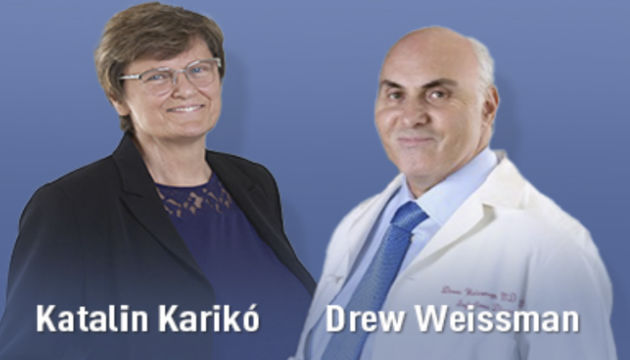 The 2023 Nobel Prize Laureates in Physiology or Medicine [Source: The Nobel Assembly at Karolinska Institutet’s website www.nobelprizemedicine.org]
The 2023 Nobel Prize Laureates in Physiology or Medicine [Source: The Nobel Assembly at Karolinska Institutet’s website www.nobelprizemedicine.org]
Selection of Nobel Prize Laureates: During the era of Alfred Nobel, Physiology referred to the preclinical medical sciences while Medicine was to the clinical sciences. Hence, Nobel Prize laureates in this prize domain have been selected from the broad biomedical field, with “unique discovery” and “greatest benefit for mankind” being the key criteria, not illustrious scientific careers. These criteria, coupled with the intensity of the selection process and the considerable prize money, at once make the Nobel Prize highly esteemed by the international scientific community. Indisputably, it is the “world’s most glorious award.”
The Two Nobel Laureates: This past October 2nd, the Nobel Assembly at Karolinska Institute in Stockholm, Sweden announced the news: this year’s Nobel Prize in Physiology or Medicine has been awarded jointly to Hungarian-American biochemist Katalin Karikó and American immunologist Drew Weissman “for their discoveries concerning nucleo side base modifications that enabled the development of effective mRNA vaccines against COVID-19.”
Unique discovery: The biochemist-immunologist team at the University of Pennsylvania in Philadelphia discovered that substituting a pseudo-uridine molecule for the genuine molecule in one of the four building blocks of the nucleoside enabled the injection of mRNA (short for ‘messenger RiboNucleic Acid’) vaccine without the unwanted acute inflammation that destroys the mRNA vaccine platform itself. Until their unique discovery, trials with non-modified mRNA vaccines had failed.
A dilemma: The development of lipid nanoparticles to envelope the modified mRNA and ease its entry into the cells was needed. Many contributed to this endeavour. That’s why some scientists felt “it would have been nice if the Nobel Assembly had also recognized” these contributors. But how to single out anyone from among the many must have created a dilemma for the Nobel Assembly since the Nobel Prize for a unique discovery is limited to no more than three recipients.
Award Ceremony: The Nobel Laureate duo will receive their Nobel Prize medal, diploma, and equal share of the prize amount (11 million Swedish krona or US$1 million) at the Award Ceremony on December 10th in Stockholm, preceded three days earlier by their Nobel Lectures.
To date, 115 Nobel Prizes in this prize field have been won by 228 laureates (of whom 215 are men) since the first one was awarded in 1901 to the German physiologist Emil von Behring for his work, in part, on diphtheria vaccine. [The other four prize fields are, until 1967, chemistry, literature, peace, and physics; the field of economics has been added since 1968.]
Says Professor Karikó, an American immigrant from Hungary and the 13th female scientist to win a Nobel Prize in this prize field, in an interview with the science magazine, Nature: “Hopefully, this prize will inspire women and immigrants and all of the young ones to persevere and be resilient.”
Benefit to humankind: The magnitude of the human toll from COVID-19 – over 4.7 million cases and 50 thousand deaths in Canada, over 100 million cases and 1.1 million deaths in the USA, and over 770 million cases and 6.9 million deaths in the world – is mind-boggling.
Millions more could have fallen sick, suffered and succumbed to COVID-19; many more healthcare providers and public health officials overwhelmed; many more hospitals and ICUs overburdened; many more non-COVID patients’ medical and surgical needs unattended; and much more economic and financial woes heaped upon countries and their citizens.
All these most likely would have happened and led to an even more sombre segment of the three-year pandemic had not the Pfizer-BioNTech and Moderna COVID vaccines been developed at a record-breaking speed and granted emergency-use authorization; mass vaccination promptly started in December 2020; and the majority of the population in Canada and the world accepted them. Undoubtedly, these vaccines helped tame the COVID-19 virus that menaced the world until May this year.
For their pioneering work, we gratefully salute the two 2023 Nobel Prize Laureates in Physiology or Medicine for their unique scientific discovery to the greatest benefit of humankind. They, indeed, contributed immensely to saving millions of lives from illness and death and ending one of the worst threats to human health in this century.
[Editor’s note: Dr. Rey Pagtakhan – a retired lung specialist, professor and federal cabinet minister – received his MD from the University of the Philippines (UP) and specialized at the UP-Philippine General Hospital, the St. Louis Children's Hospital of Washington University, and the Winnipeg Children’s Hospital of the University of Manitoba. Widely published in medical journals and books, his community-oriented column, Medisina at Politika, appears in Canadian Filipino Netand Pilipino Expressand has focused on COVID-19 since WHO declared on January 30, 202o the then-new coronavirus pneumonia a “public health emergency of international concern” to increase public awareness and drive vaccine uptake.]


